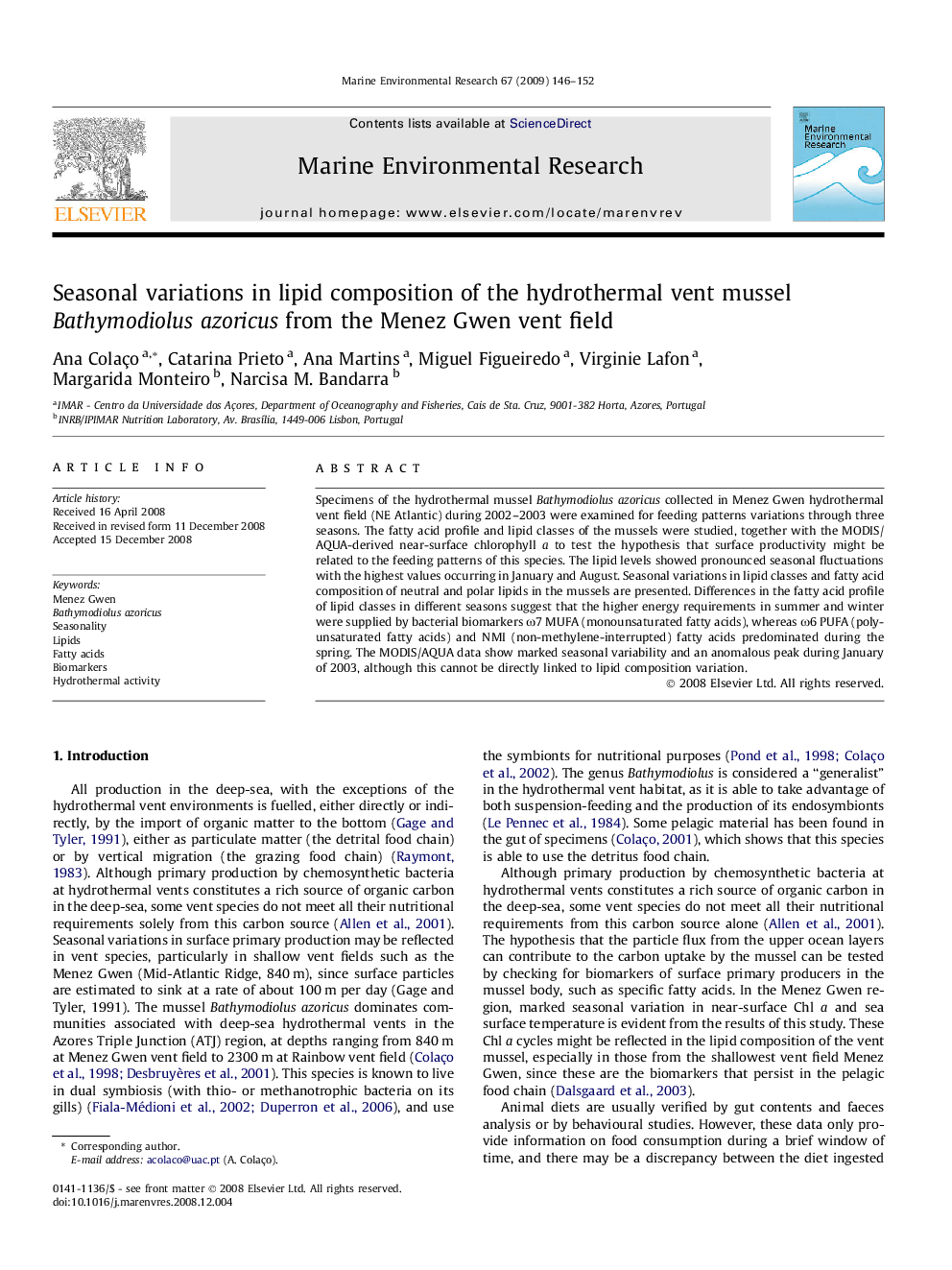| Article ID | Journal | Published Year | Pages | File Type |
|---|---|---|---|---|
| 4551485 | Marine Environmental Research | 2009 | 7 Pages |
Specimens of the hydrothermal mussel Bathymodiolus azoricus collected in Menez Gwen hydrothermal vent field (NE Atlantic) during 2002–2003 were examined for feeding patterns variations through three seasons. The fatty acid profile and lipid classes of the mussels were studied, together with the MODIS/AQUA-derived near-surface chlorophyll a to test the hypothesis that surface productivity might be related to the feeding patterns of this species. The lipid levels showed pronounced seasonal fluctuations with the highest values occurring in January and August. Seasonal variations in lipid classes and fatty acid composition of neutral and polar lipids in the mussels are presented. Differences in the fatty acid profile of lipid classes in different seasons suggest that the higher energy requirements in summer and winter were supplied by bacterial biomarkers ω7 MUFA (monounsaturated fatty acids), whereas ω6 PUFA (polyunsaturated fatty acids) and NMI (non-methylene-interrupted) fatty acids predominated during the spring. The MODIS/AQUA data show marked seasonal variability and an anomalous peak during January of 2003, although this cannot be directly linked to lipid composition variation.
